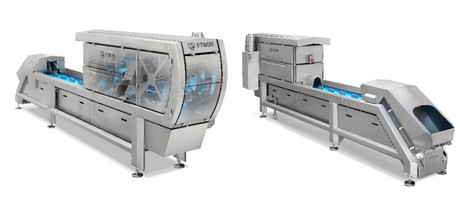The existing location in Marienfeld has been in operation for just over 150 years. The Düpmann family was always connected to the agricultural sector, and from this developed their onion peeling operation in the early 70s. Then, in the 90s, bell pepper processing was added and since then the product range has been growing steadily. After the last, 2009 extension in Marienfeld, it soon became clear that the maximum capacity had been reached and that more expansion had to be done. After many considerations, the decision was made to build a new building in Borgholzhausen. Marienfeld, however, continues to be a production location.
Saving on labor
For the new location, the existing machinery was also expanded upon. Heinz Düpmann: "Among other things, we use onions in larger sizes from Spain, which are especially in demand during the barbecue season when meat grinder segments are produced for the meat processors." The current machines are capable of peeling the onions from 70 to 90, but when looking for a new machine for these larger sizes, the choice fell on JBT FTNON's MOP-200, where in the past few years there were 10 people working on the bulbs by hand during the peak season from March to August. Now, only two operators are needed to put the onions in the correct position and to inspect the finished peeled goods. "

The onions are placed in a container or bag via a conveyor belt. The operator positions them so that head and tail can be cut off. The bulbs are then cut by four blades and clamped between two arms. The onion is then turned over and cut over its entire diameter. The peel is then blown off with compressed air. The opening and closing of a total of six arms from the machine is done with the use of magnetic fields. It is a technique that FTNON has already developed in 2011 and has been used in the MOP-200 since 2017. Subsequently, another employee inspects the peeled product for any problems.
Compact and hygienic
According to Düpmann, in addition to the savings on staff, hygiene was an important reason for the purchase of the machine. According to the management, the product no longer needs to be handled by hand and the machine is easy to clean. This is confirmed by Lars Heuvelmans of JBT FTNON. "Most existing machines require many components to peel the onions. The machine we developed is 60 percent smaller in size, with fewer parts and no chains, and everything is made from stainless steel.
The machine has a modular design so that all parts can be cleaned individually. The parts that pick up the onions, turn it over to remove and release the peel often contain springs and drive trains. We replaced them with permanent magnets. The big advantage is that these magnets require little maintenance and the setting always stays the same."





